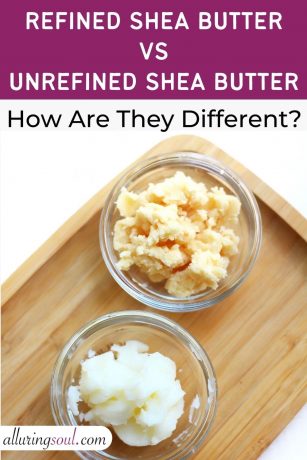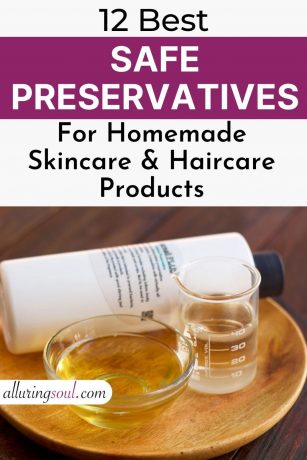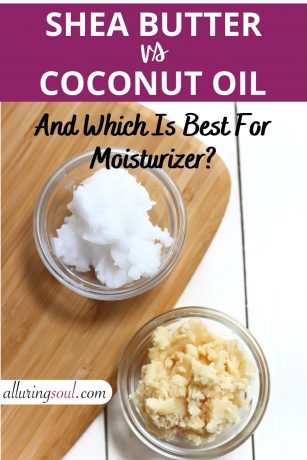Cocamidopropyl betaine (CAPB) is a common ingredient in most face cleansers, shampoos, hair masks, hand washes, and shower gels. Being a surfactant, improves the product’s ability to form lather and have a cleansing action on the skin.
This article outlines the various benefits of cocamidopropyl betaine, its properties, and how to incorporate it in skincare and haircare.
What Is Cocamidopropyl Betaine (CAPB)? How Is It made?
Cocamidopropyl Betaine is a mild amphoteric surfactant derived from coconut oil fatty acids and dimethylaminopropylamine (DMAPA). It has cleansing, foaming, and conditioning properties, making it versatile in both haircare and skincare formulations.
INCI: Cocamidopropyl Betaine
Charge: Amphoteric (can act as cationic or anionic depending on pH)
pH: 5-6
Solubility: Water
Usage Rate: 4-40%
Form: Clear to pale yellow liquid with slight viscosity
Key Properties Of Cocamidopropyl Betaine (CAPB)
- Main advantage of CAPB is that it has a negative charge in alkaline products and a positive charge in acidic products, like most personal cleansers. It is substantive when positively charged (in an acidic formulation), so it acts as a skin and hair conditioner, leaving behind a moisturized feeling after rinsing with no feeling of tightness.
- Cleansing Agent: Removes dirt, oil, and buildup from skin and scalp gently
- Foam Booster: Stabilizes and boosts foam when used with other surfactants
- Viscosity Enhancer: Thickens products naturally
- Mildness Enhancer: Reduces irritation potential of stronger surfactants like SLES
- Antistatic Agent: Helps reduce frizz and flyaways in haircare
- Solubilizer: Assists in dispersing oils, essential oils, and fragrances
Benefits in Haircare Products
- Gentle enough for daily shampoos and baby shampoos
- Prevents drying of scalp and hair shaft
- Ideal for damaged, curly, frizzy, color-treated hair
- Improves detangling and manageability
- Leaves hair soft without over-cleansing
Benefits in Skincare Products
- Maintains natural skin moisture barrier
- Suitable for sensitive, acne-prone, and dry skin types
- Used in facial cleansers, body washes, micellar water, shaving foams
- Cleanses without tightness or dryness
Is Cocamidopropyl Betaine Natural?
Cocamidopropyl Betaine is derived from natural sources—specifically coconut oil—but it is not considered 100% natural. It undergoes synthetic chemical processing (reacting coconut fatty acids with dimethylaminopropylamine), which classifies it as a naturally derived or semi-synthetic ingredient.
So, while it’s milder and more eco-friendly than harsher synthetic surfactants, it doesn’t meet the strictest “all-natural” definitions. However, many natural or organic brands do accept it in formulations due to its origin and mildness.
Is Cocamidopropyl Betaine Vegan?
The main components from which cocamidopropyl betaine is manufactured are coconut oil and plant-based betaine. This makes CAPB a fully vegan product and useful for use in vegan and cruelty-free formulations.
What products contain Cocamidopropyl Betaine?
Cocamidopropyl betaine is used in almost every skincare or bodycare products that require a mild surfactant. They are mainly found in the following products:
- Hand wash
- Face wash
- Conditioner
- Sulfate-free shampoos
- Kids’ and baby cleansers
- Shaving foams
- Body washes and bath gels
- Makeup removers/micellar water
Cocamidopropyl Betaine vs. Coco Betaine-Which Is Better?
| Feature | Cocamidopropyl Betaine | Coco Betaine |
|---|---|---|
| Source | Coconut oil + synthetic processing | Derived more directly from coconut fatty acids |
| Mildness | Milder, less likely to irritate | Slightly more irritating for sensitive skin |
| Foaming | Excellent foaming & thickening | Moderate foaming |
| pH Range | Broad, compatible with most formulations | Slightly narrower pH stability |
| Common Uses | Shampoos, body washes, facial cleansers | Similar uses but less frequently used |
| Irritation Potential | Low (more refined form) | Higher in some individuals |
| Biodegradability | Readily biodegradable | Readily biodegradable |
| Availability | More widely used and available | Less common in commercial products |
Which Is Better for You?
- Use Cocamidopropyl Betaine if you want a balanced, gentle surfactant that’s stable in formulations with a wide pH range and minimal sensitizing potential.
- Choose Coco Betaine if you prefer a more natural-processing route and don’t mind the slightly stronger cleansing performance—though be cautious if you have skin or scalp sensitivity.
Is Cocamidopropyl Betaine Safe For Skin And Hair? What Are Its Side Effects?
Yes, Cocamidopropyl Betaine (CAPB) is generally considered safe for skin and hair when used in properly formulated products. However, like many cosmetic ingredients, it can cause side effects in some individuals, especially those with sensitive skin.
- In rare cases, it may trigger contact dermatitis, especially in people with eczema or highly reactive skin. Patch testing is recommended for individuals with prior surfactant allergies.
- At higher concentrations or when improperly formulated, it may sting the eyes. This is more common in DIY formulations without proper dilution.
- People with coconut allergies (though the risk is minimal because CAPB is chemically modified and purified) should be cautious.
Does Cocamidopropyl Betaine Cause Acne?
No, it is a mild, water-soluble surfactant. It’s non-comedogenic, so it does not block pores. Often included in formulas designed for sensitive or acne-prone skin.
While CAPB itself isn’t comedogenic, it may contribute to acne or irritation due to:
- Poorly purified CAPB may cause contact dermatitis, irritation, and disruption of the skin barrier.
- This can trigger inflammatory acne-like symptoms, especially in sensitive users.
CAPB is usually mild, but in high concentrations or formulated with other harsh surfactants, it may strip natural oils, disrupt the skin microbiome, and cause dryness, irritation, or inflammation that mimics or worsens acne.
Using CAPB in homemade products without adjusting the pH (ideal: 5.0–6.0 for skin) can lead to irritation, which can look like or trigger breakouts.
Is Cocamidopropyl Betaine Nonionic?
No, cocamidopropyl betaine is not nonionic. This is because nonionic surfactants do not have any charge. On the other hand, CAPB is amphoteric, that is, it has a different charge depending on the solution in which it is present.
Cocamidopropyl betaine assumes a positive charge in acidic solutions and a negative charge in alkaline solutions.
Is Cocamidopropyl Betaine Irritating?
The compound cocamidopropyl betaine is not irritating in itself. However, during the manufacturing process of CAPB, two chemicals are generated which can cause irritation to the skin.
The by-products that are responsible for the irritation in cocamidopropyl betaine-based products are:
- Aminoamide (AA)
- 3-dimethylaminopropylamine (DMAPA)
High-grade CAPB products do not contain these impurities and have a significantly lesser risk of irritation.
Can Cocamidopropyl Betaine Be Used Alone In Making Cosmetics?
Cocamidopropyl betaine is an amphoteric surfactant. It is thus very mild and cannot act as a good cleanser when used as a standalone surfactant.
When used alone, cocamidopropyl betaine forms mild lather, which is useful in baby products such as shampoos. However, cocamidopropyl betaine should be used as a co-surfactant along with another primary surfactant for skincare products for adults to get the best cleansing action.
Is Coco Betaine Same As Cocamidopropyl Betaine?
Although coco betaine and cocamidopropyl betaine sound similar, they are not the same products.
Both coco betaine and cocamidopropyl betaine are manufactured from betaine and coconut oil. However, coco betaine is manufactured using a fully natural process, whereas they are combined synthetically to manufacture CAPB.
Thus, coco betaine is predominantly found in organic formulations, while cocamidopropyl betaine is found in non-organic formulations. In terms of availability, cocamidopropyl betaine is more readily found than coco betaine.
What Are The Alternatives For Cocamidopropyl Betaine?
Replacing Cocamidopropyl Betaine can be tricky, especially for home formulators, because amphoteric surfactants are limited in availability. One of the most promising alternatives available to DIY crafters is:
- Babassuamidopropyl Betaine – This is currently one of the gentlest and most effective amphoteric surfactants that’s more accessible for home use. It offers similar properties to Cocamidopropyl Betaine but is often better tolerated by sensitive skin.
Another option is:
- Coco Betaine – While often suggested as a substitute, it’s important to note that much of the “Coco Betaine” sold in the market is actually Cocamidopropyl Betaine upon checking the INCI (ingredient list). And even when it is genuine, Coco Betaine tends to be slightly less mild compared to Babassuamidopropyl Betaine or other newer alternatives.
In short, Babassuamidopropyl Betaine is a solid alternative, and true Coco Betaine can work if you’re careful with sourcing—but options are limited, especially for home crafters seeking gentle, amphoteric surfactants.






